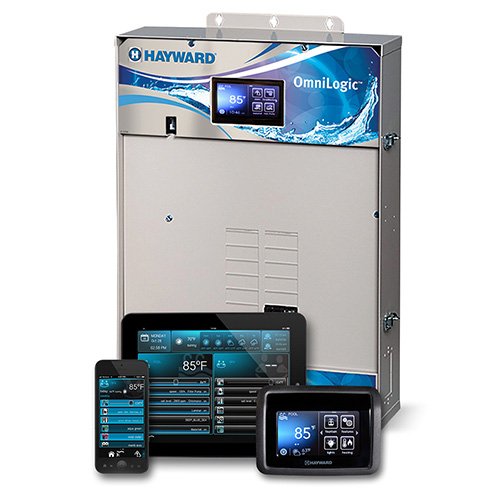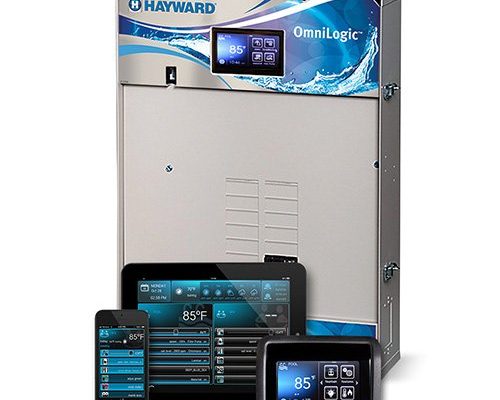
Let’s set the stage. Hayward is a well-known brand for pool automation, with remotes designed to help you manage pumps, lighting, and heaters without trekking outside. But here’s the thing: as technology races on, the borders between traditional remotes and smart home systems blur. It’s like having an old garage door opener and dreaming it could just listen when you shout, “Hey Google, close the garage!” The reality? Connecting pool gear isn’t quite as plug-and-play as adding a new smart bulb.
Understanding Hayward Pool Remotes: What Are They?
Before we jump into the world of smart home compatibility, it helps to know what a *Hayward pool remote* actually does. These remotes aren’t your average TV clickers. Think of them as specialized controllers built to talk directly to your pool’s automation system—sort of like the conductor of an orchestra, queuing up everything to run in harmony.
Hayward offers several types of remotes, like the **AquaPod**, **AquaLogic**, and the **OmniLogic** remote. Each of these lets you adjust pool settings from a distance: switch on the lights, fire up the spa jets, or tweak the water temperature, all without heading to the control panel. Some are waterproof and float in the pool. Others are wall-mounted or handheld with LCD screens. The real advantage? They’re tailored for pool tasks, with buttons and menus made just for spa and backyard features.
But here’s the rub: these remotes are built first and foremost for reliability and waterproofness—not universal smart home compatibility. While they’re fantastic for pool duties, that single-minded focus means they’re not always fluent in the “languages” smart home systems speak.
What Makes a Device ‘Smart Home Compatible’?
Let me explain—this is the part where people start to get lost. When we say a device is *smart home compatible*, we usually mean it can connect to popular ecosystems like Amazon Alexa, Google Home, or Apple HomeKit. These platforms let you control everything from your phone or via voice commands, creating that “living-in-the-future” feeling.
Smart home compatibility usually involves one or more of these:
- Wi-Fi or Bluetooth connectivity, so the device can join your home network
- An app for customization and control
- Integration with voice assistants or home automation routines
A truly *smart* device can be set up, paired, coded, or even reset remotely, and it responds to commands given from other services—not just its own remote. So, the big question is: do Hayward’s pool remotes share this set of features, or are they stuck in their own universe?
Do Hayward Pool Remotes Work With Smart Home Devices?
Here’s the honest answer: **Most classic Hayward pool remotes do not natively work with modern smart home devices.** They’re designed on closed systems, using proprietary signals to “talk” only to your pool controller. You can’t just pair a basic AquaPod with Alexa—or have Siri turn on your pool heater—right out of the box.
But, it’s not all closed doors! Some newer Hayward automation products, like the **OmniLogic** and **OmniHub** systems, move closer to smart home integration. These advanced controllers connect to your Wi-Fi and have their own companion app—**Hayward OmniLogic**—that lets you control pool features from your phone, tablet, or even a web browser.
Let’s clarify: while you still can’t use a traditional Hayward remote as a “universal” smart controller, with an upgraded Hayward system, you can use your *smartphone* as a hybrid remote. In some cases, the system even links with Amazon Alexa or Google Assistant, letting you control your pool with a voice command or through a smart routine. That’s where the magic of smart home devices meets poolside relaxation.
Key point: If your Hayward remote is older or stands alone, it’s probably not going to sync or pair with Alexa, Google, or Apple HomeKit. But if your pool uses a Hayward automation hub (like OmniLogic), smart integration is absolutely possible with a little setup.
Which Hayward Systems Offer Smart Home Compatibility?
If you’re serious about marrying your pool with your smart home setup, you’ll want to know which Hayward products play ball. Here’s where things get specific. Hayward’s smart-ready lineup includes:
- OmniLogic Pool & Spa Automation: Designed from the ground up with Wi-Fi, apps, and voice assistant integrations.
- OmniHub: An add-on module that brings Wi-Fi and app support to existing pool systems—even older ones.
Both these systems support the **Hayward mobile app**, allowing you to code, pair, and control everything—timers, lights, temperature—right from your device. OmniLogic and OmniHub also connect with popular smart assistants, so you can say, “Alexa, turn on pool lights,” and enjoy the show.
On the other hand, legacy Hayward systems like **ProLogic** and **AquaLogic** typically don’t offer direct smart home integration without extra hardware. If you only have a basic Hayward remote, it won’t magically sync with your home automation routines.
Comparing Control: Remote vs. App vs. Voice
– Traditional remotes are purpose-built for pools, rugged, and waterproof. They’re great for poolside control but limited in smarts.
– Smartphone apps (with compatible systems) give you flexibility, remote access, and an easier way to reset or troubleshoot.
– Voice assistants (with OmniLogic/OmniHub) bring hands-free convenience and even let you build pool modes into home routines—think “movie night” with the spa jets humming.
Setting Up Smart Home Integration With Hayward
You might be wondering, “If my Hayward system supports smart home features, how do I actually get started?” Honestly, it’s a lot simpler than it sounds, but there are a few steps you need to follow. Here’s a basic roadmap for setting up smart home integration with a compatible Hayward system:
- Install and connect your Hayward automation hub (OmniLogic or OmniHub). Make sure it’s powered up and connected to your pool’s control panel.
- Download the Hayward app on your phone or tablet.
- Follow the in-app instructions to pair your hub to your home Wi-Fi. This might require a quick network code or pressing a sync button.
- Link your smart home assistant (like Alexa or Google Home) through their respective apps. Usually, you’ll find “Hayward” as a skill or connected service—just sign in and authorize access.
- Test your setup—ask your assistant to turn on a pool feature and make sure everything talks properly.
If something goes wrong, don’t panic. Common troubleshooting steps include:
- Resetting the Hayward hub (follow the manual or app instructions)
- Reconnecting to Wi-Fi (double-check your network password!)
- Pairing the assistant again if voice commands aren’t working
Sometimes, batteries in the old remote can cause confusion—so make sure you’ve got fresh ones if you plan to use both the remote and the app.
Common Problems and Troubleshooting Tips
No tech is perfect, and honestly, pool systems can be fussy. If your Hayward smart features aren’t behaving, here are some typical speed bumps:
- Wi-Fi drops or weak signal: Pool equipment is usually outside, and Wi-Fi coverage may not reach. Consider a range extender or mesh network if you get frequent timeouts.
- Failed sync or pairing: Sometimes, the pairing process glitches. Unplugging the hub for 30 seconds, then trying again, often works wonders.
- Remote battery issues: If you still use a physical Hayward remote along with the app or hub, low batteries can cause the remote to lose connection. Swapping them out can solve mysterious problems.
- Firmware or app updates: Sometimes the app or device software gets outdated and needs a refresh before new features or integrations work correctly.
Pro tip: Whenever troubleshooting, triple-check that your Hayward app, smart assistant, and pool hub are all on the latest version. Many quirks vanish after a quick update.
Alternatives: Universal Remotes or Third-Party Smart Devices
Here’s where things get interesting: what if your Hayward system is too old, or you want more hands-off control? Some pool owners explore *universal remotes* or third-party smart modules that claim to bridge the gap. It sounds tempting—a device that lets you add smart features without replacing your whole pool brain.
But, based on real-world feedback, these options can be hit-or-miss. Universal remotes often struggle with proprietary pool signals, and some third-party smart devices might void warranties or create unforeseen issues. Still, if you’re tech-savvy and willing to experiment, options like **PoolSense** or **iAquaLink** could bring smart control to older systems. Just be prepared for some extra setup, coding, or even the need to reset your system if things go sideways.
Most people find it smoother to upgrade to a Hayward system designed for smart integration. The setup is less fiddly, and you get the peace of mind that comes with brand support.
Is It Worth Upgrading Your Hayward System for Smart Features?
You might be on the fence: is all this effort worth it? Let’s weigh it out. Upgrading to a smart-compatible Hayward system can be a game changer if you love convenience, want remote troubleshooting, or dream of seamless pool parties at the tap of an app.
On the other hand, if you’re happy with your classic Hayward remote and just want simple, reliable control, you might not need to invest in new tech. Upgrading has costs—both in time and money. But if smart home routines, voice control, and app-based codes make your life easier, it’s a step worth considering.
Some people love the “old-school” feel of a physical remote. Others swear by the freedom of saying, “Hey Google, turn on the waterfall,” from their kitchen. It’s not one-size-fits-all, so think about what control style fits your life.
Final Thoughts: Bringing Your Pool Into the Smart Home Era
Connecting your Hayward pool remote to smart home devices isn’t always as straightforward as pairing a Bluetooth speaker—but it’s not impossible, either. For most pool owners, classic remotes are built for simplicity and longevity, not for chatting with Alexa. But with modern Hayward automation hubs like OmniLogic, you really can bring pool control into the world of apps, voice, and home automation.
The bottom line? If you want that dreamy, connected home experience—including your backyard—look into the latest Hayward smart systems. For everyone else, your trusty remote still delivers poolside power, just without the smart home sparkle. No matter which way you lean, understanding your options makes pool time more relaxing and, dare I say, a little bit smarter.
